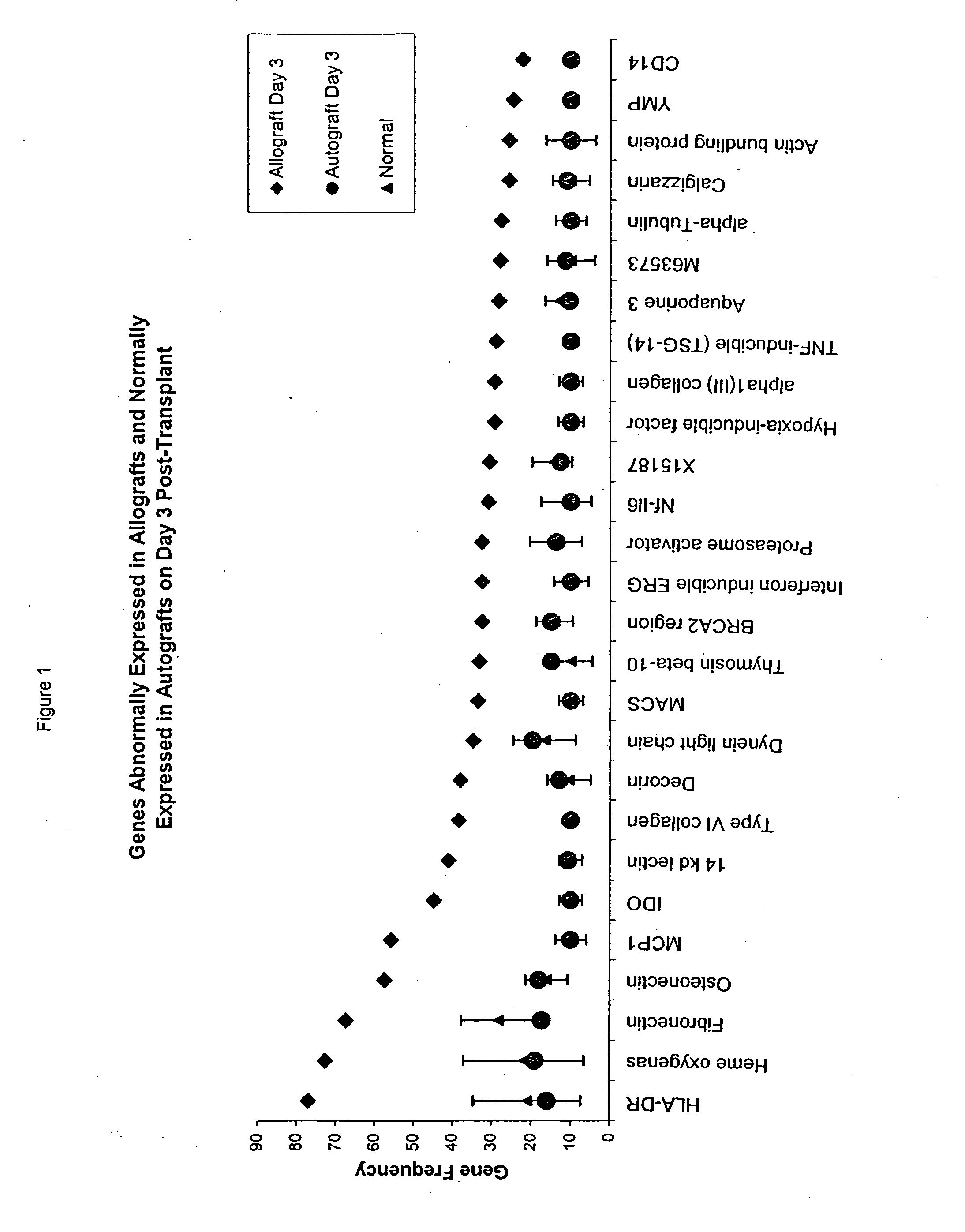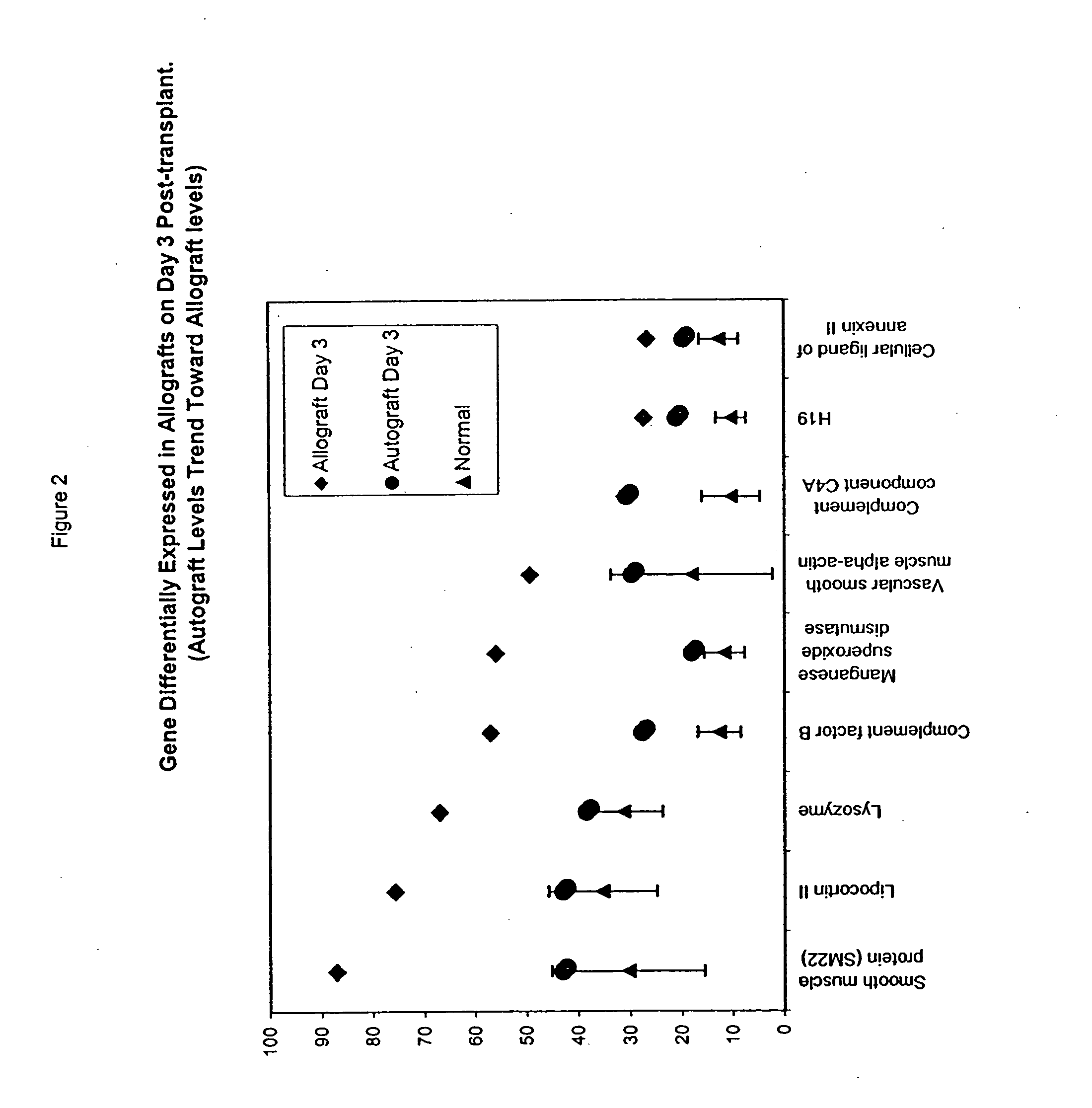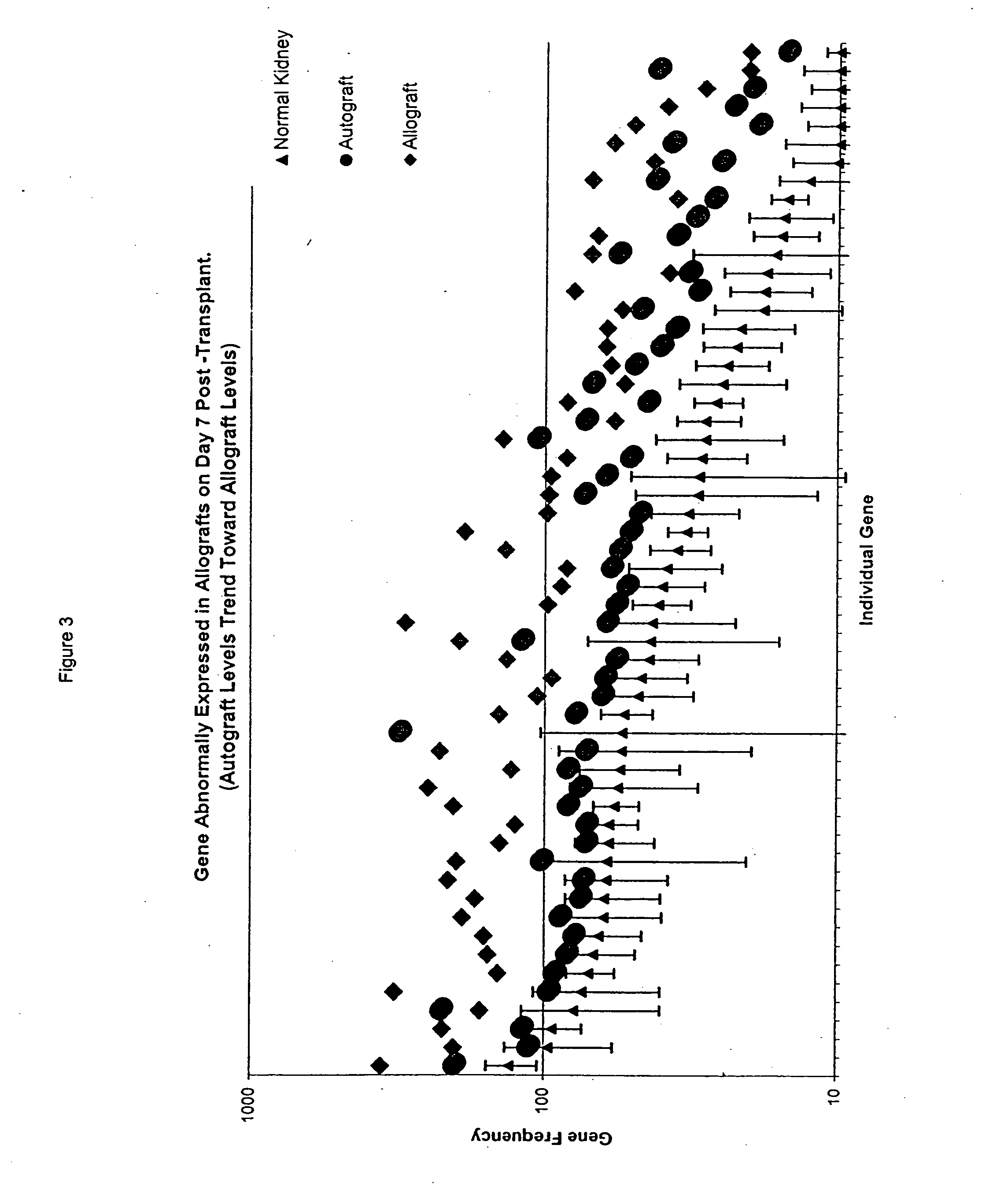Methods for diagnosing and treating ischemia and reperfusion injury and compositions thereof
a technology of applied in the field of methods for diagnosing and treating ischemia and reperfusion injury, can solve the problems of prolonging the survival time of donor organs subjected to prolonged ischemia, cell death and permanent organ damage, and prolonging the survival time of donor organs
- Summary
- Abstract
- Description
- Claims
- Application Information
AI Technical Summary
Benefits of technology
Problems solved by technology
Method used
Image
Examples
example 1
Identification and Characterization of Marker cDNA in Primate Model of Ischemia and Reperfusion Injury
A. Development of Ischemia and Reperfusion Injury in Rhesus Monkey
[0258] Three renal allografts were performed using MHC mismatched donors-recipient pairs. Donor-recipient pairs were selected based on genetic nonidentity at MHC class II. This was established based on denaturing gel electrophoresis and direct sequencing of the second exon of HLA DR B. T cell responsiveness of the recipient towards the donor was confirmed in vitro for all donor-recipient pairs using the MLR assay. Each animal was tested against all potential donors to establish the highest responder pairs for transplantation.
[0259] Additionally, three autografts were performed. In this case the animal serves as its own donor and, as such, no typing is performed. Native kidneys removed at the time of auto- or allo-transplantation were also evaluated.
[0260] Renal allotransplantation was performed using standard sur...
example 2
Identification and Characterization of Marker cDNA in Human Model of Ischemia and Reperfusion Injury
Biopsies from Human Kidney Transplants
[0275] In addition, to further identify targets for modulation of ischemia and reperfusion in humans, samples from five human kidney transplants were collected from living and cadaveric donor kidneys. Living donor kidney samples were biopsied prior to removal (pre-reperfusion) and following transplantation (30 to 60 minutes after reperfusion). While all pre-reperfusion biopsies were taken prior to organ harvest, the timing of the biopsies occurred both before and after clamping and resulted in unexpected variability in expression levels. Preferably, pre-reperfusion biopsies are taken prior to clamping. Cadaveric kidneys were biopsied after implantation and reperfusion (30 to 60 minutes after reperfusion). Isolation of RNA and quantitative analysis of hybridization patterns were conducted as shown in Example 1 above. Genes that were not previous...
PUM
| Property | Measurement | Unit |
|---|---|---|
| Temperature | aaaaa | aaaaa |
| Temperature | aaaaa | aaaaa |
| Temperature | aaaaa | aaaaa |
Abstract
Description
Claims
Application Information
 Login to View More
Login to View More - R&D
- Intellectual Property
- Life Sciences
- Materials
- Tech Scout
- Unparalleled Data Quality
- Higher Quality Content
- 60% Fewer Hallucinations
Browse by: Latest US Patents, China's latest patents, Technical Efficacy Thesaurus, Application Domain, Technology Topic, Popular Technical Reports.
© 2025 PatSnap. All rights reserved.Legal|Privacy policy|Modern Slavery Act Transparency Statement|Sitemap|About US| Contact US: help@patsnap.com



